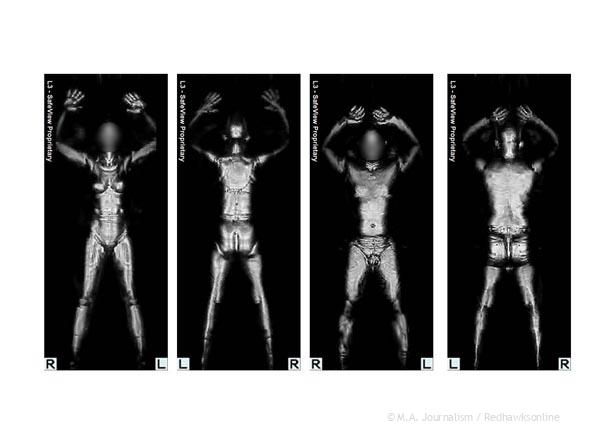
The U.S. Transportation Security Administration has published images produced by its new body-scanning security technology, which is designed to preserve privacy while increasing airline safety.
New security system good addition to airports
By Meera Goswitz
Talon staff writerTake off your shoes and belts. Remove your cell phone and keys. Remove any other metal items from your pockets.
This probably sounds familiar: the process all passengers must go through before entering the gates at the airport. However, for the many students and faculty that will be flying over the holidays, there has been a change in the security at many airports. After last year’s Christmas day ‘underwear bomber,’ the Transportation Security Administration (TSA) has been scrambling to increase security. Recently, a new product called Advanced Imaging Technology (AIT) has been released, and currently, there are units in 58 airports across the United States, including the Minneapolis-St. Paul airport (MSP).
There are two types of AIT units; the millimeter wave technology produces an image of the body, but it doesn’t use an X-ray. The backscatter uses an X-ray to produce clearer images of the body. These machines not only identify metal objects, but they can also see other weapons that can be hidden on the body.
One controversy surrounding these machines (especially the backscatter units) is connected with health concerns. Some question the amount of radiation a passenger receives while using these machines. However, AIT units all follow national health and safety standards, and the energy that is produced is thousands of times lower than the amount produced by cell phones.
But privacy, not health, is the main dilemma. The images produced by these units are very clear, and some argue that these images violate passengers’ privacy. However, the TSA reader sits in a separate room, never seeing the passenger, and communicates with the other officer via headset. Also, the face of the passenger is automatically blurred out and the machines cannot store or send the images anywhere. Officers reading the scans are not allowed to bring in cell phones or any other device that has picture-taking ability. Many precautions are in place to prevent the violation of privacy.
This new technology creates a safer flying environment, and while not perfect they can spot more than a metal detector or pat down would. The units can detect plastic and other types of weapons and although it can’t see weapons hidden in body cavities, it is an improvement from metal detectors. So many people are arguing that the AIT units are a violation of privacy, when really they can stop someone from blowing up a whole plane.
Without the privacy precautions in place, these units would not be acceptable. However, the TSA has put many steps in place to secure all passengers’ privacy.
If we always shun new technology, where would we be? We must take steps towards improving our security and creating a safer flying experience.
